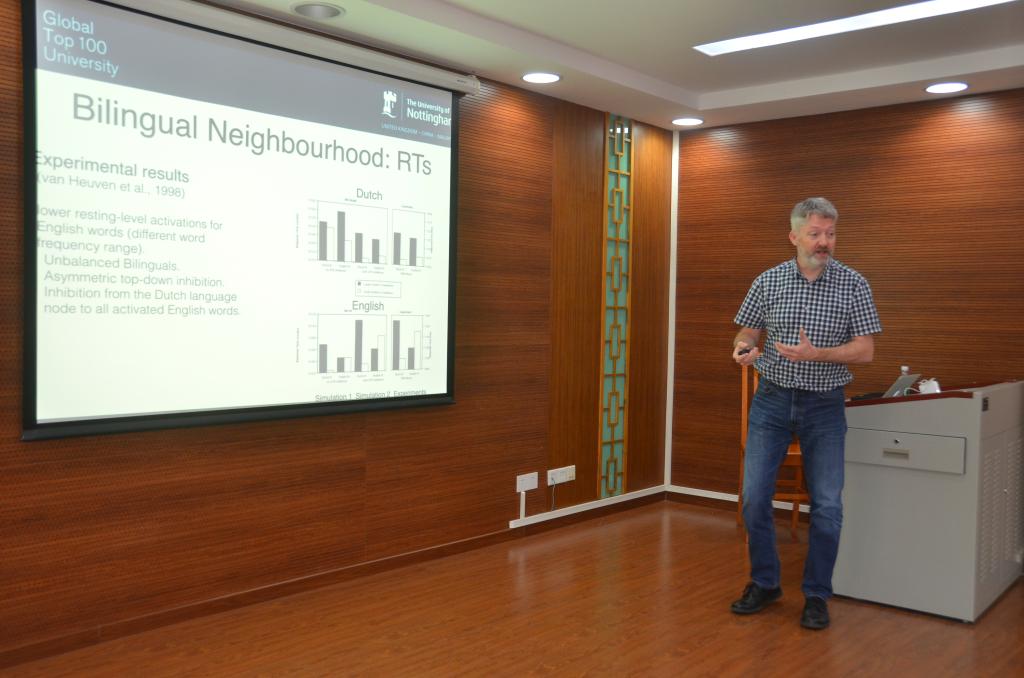Prof. Walter van Heuven from Universityof Nottingham reported on “Word Recognition and the Bilingual Brain” on theafternoon of Dec. 6th, 2017.
He started off with the access andstorage questions of bilingual word recognition, viz., whether bilingualsaccessed their word representations in a selective or nonselective manner andif they had independent lexicons or an integrated lexicon. In terms of thesetwo fundamental questions, there were four theoretical possibilities: 1)language-selective access, independent lexicons; 2) selective access,integrated lexicon; 3) language non-selective access, independent lexicon; 4)nonselective access, integrated lexicon. The similarity between words indifferent languages could provide with researchers a window into these twoissues. Specifically, Prof. van Heuven used orthographic neighbours andinterlingual homographs in his studies. With the former category, he found thattarget word recognition was affected by neighbours from both languages andtherefore arrived at the conclusion that words were activated in parallel froman integrated lexicon. This neighbourhood effect was corroborated inevent-related potentials studies and natural reading experiments. Similarpatterns emerged in brain imaging studies using interlingual homographs withsimilar or different scripts. The simultaneous activation of two languagesrevealed itself in certain brain areas showing stimulus-based and response-basedlanguage conflict. To sum up, psychological experiments in bilingual wordrecognition mostly pointed to a nonselective access pattern with an integratedlexicon.
In the second half of the lecture, heintroduced computational models as another line of research probing intobilingual word recognition. For monolingual model of orthographic processing,there was a localist connectionist network model called Interactive Activation(IA) model. Prof. van Heuven, together with Dijkstra, extended the IA model tothe bilingual situation and constructed the Bilingual Interactive Activation(BIA) model, characterized by an integrated lexicon with parallel access,language nodes at different levels and top-down inhibition. He also developedan online application of the IA and BIA models called jIAM. The recentmodification of the BIA model was the BIA + model, which consisted of the wordidentification system and task/decision system. The basic assumptions of BIA +model echoed the conclusions drawn from experimental studies. Prof. van Heuvenconcluded with the introductions to SOPHIA (semantic orthographic phonological interactiveactivation) and other computational simulations as the implementation of theBIA+ model.

